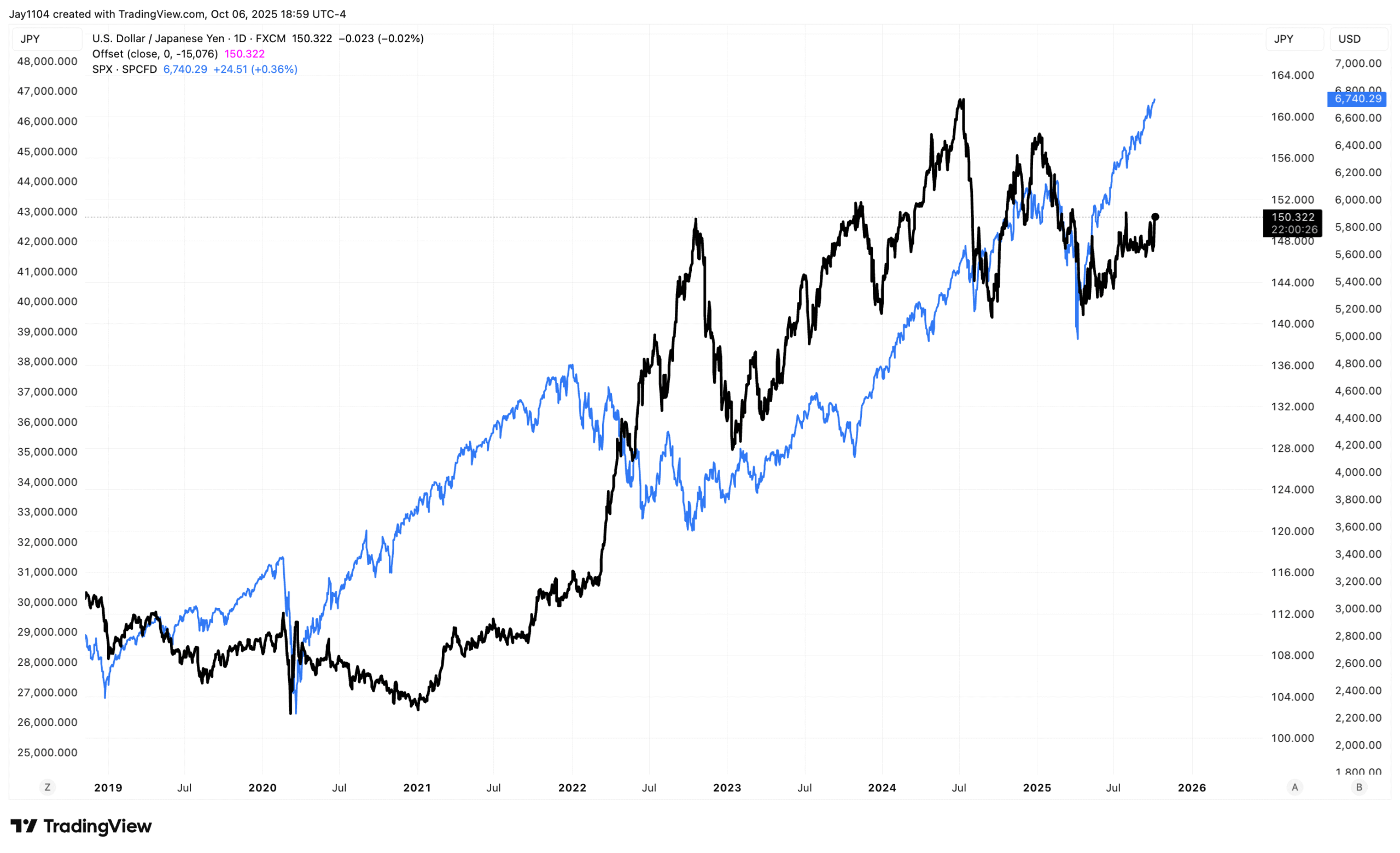TSX lower as gold rally takes a breather
3 Takeaways
-
Monitor dispersion and volatility metrics — Elevated DSPX and wide gaps between VIX and VIXEQ suggest instability beneath headline index gains.
-
Watch for volatility unwind during earnings season — The current implied volatility dispersion trade often reverses as corporate results begin, typically leading to broader market shifts.
-
Track Japanese rates and yen movements closely — Continued JGB yield increases and yen weakness could tighten global dollar liquidity, impacting risk assets.
Monday saw another odd day of trading: the S&P 500 index was up by 36 bps, while the RSP equal-weight index was down by 3 bps.
Unsurprisingly, there were around 200 more stocks down on the day than up on the NYSE. Naturally, when the S&P 500 rises while the RSP falls, dispersion tends to run rampant—and that’s exactly what happened on Monday. The DSPX rose 8% to 37.2.
Interestingly, as previously noted, when the DSPX is elevated in this manner, it’s usually accompanied by higher levels of volatility and often occurs during significant market drawdowns, such as in 2018, 2020, 2022, and possibly earlier this year.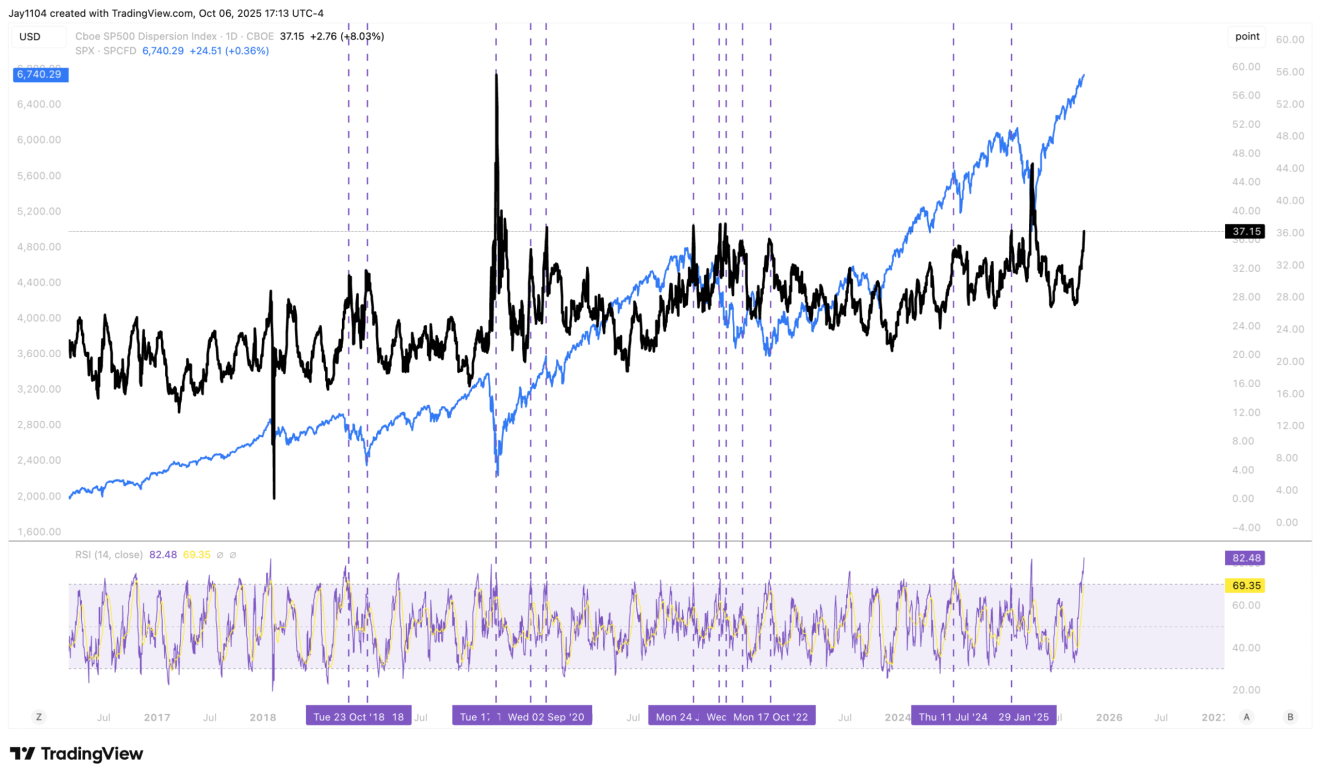
When looking at the constituent volatility index for the S&P 500, it’s clear that the divergence between index-level volatility and individual stock volatility is quite wide at this point. With the VIXEQ at 40.6, and the VIX at 16.4.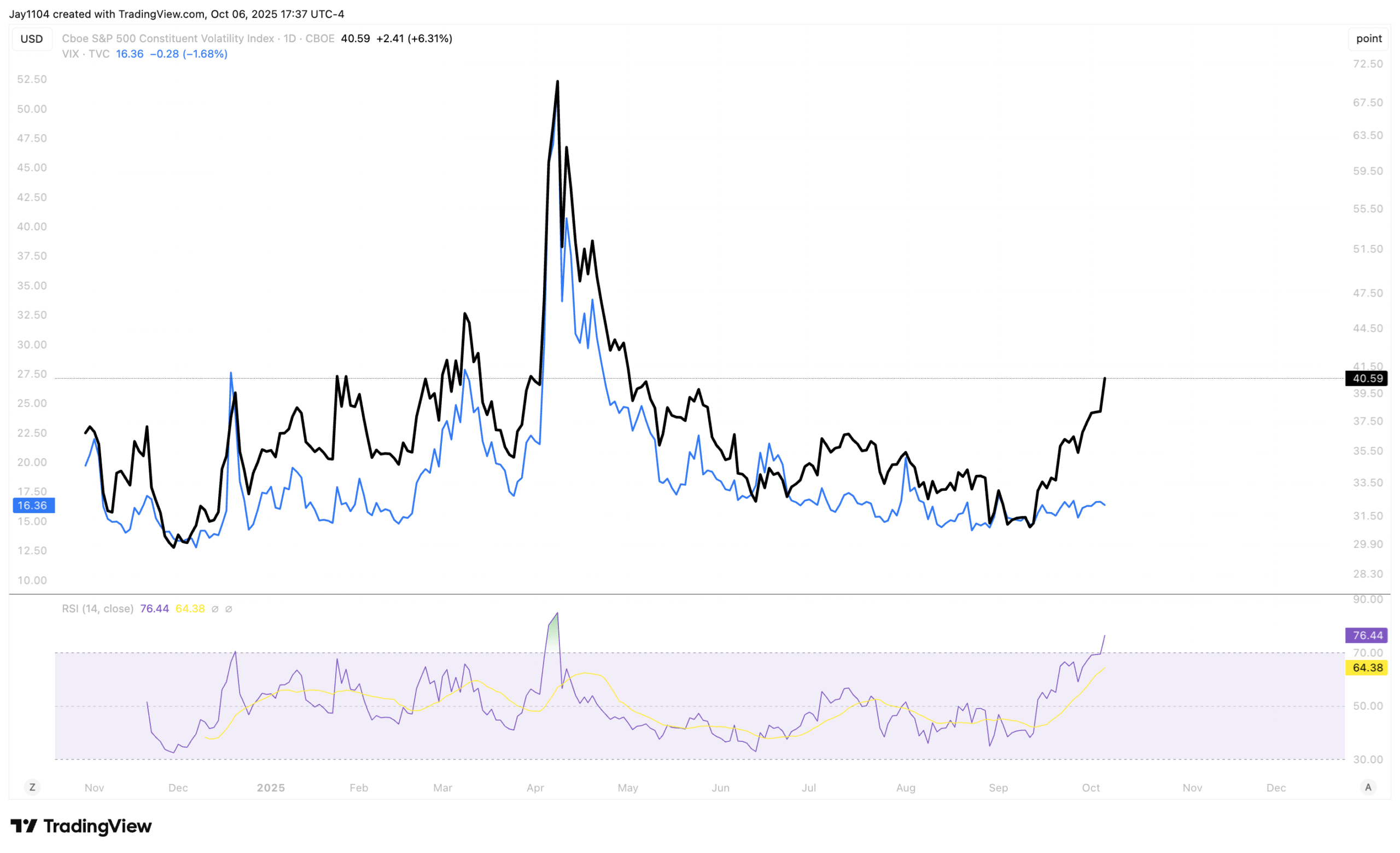
The issue, of course, is that the S&P 500’s 21-day realized volatility is just 5.55, which means the index can’t rise or fall by more than about 35 bps per day without pushing realized volatility higher.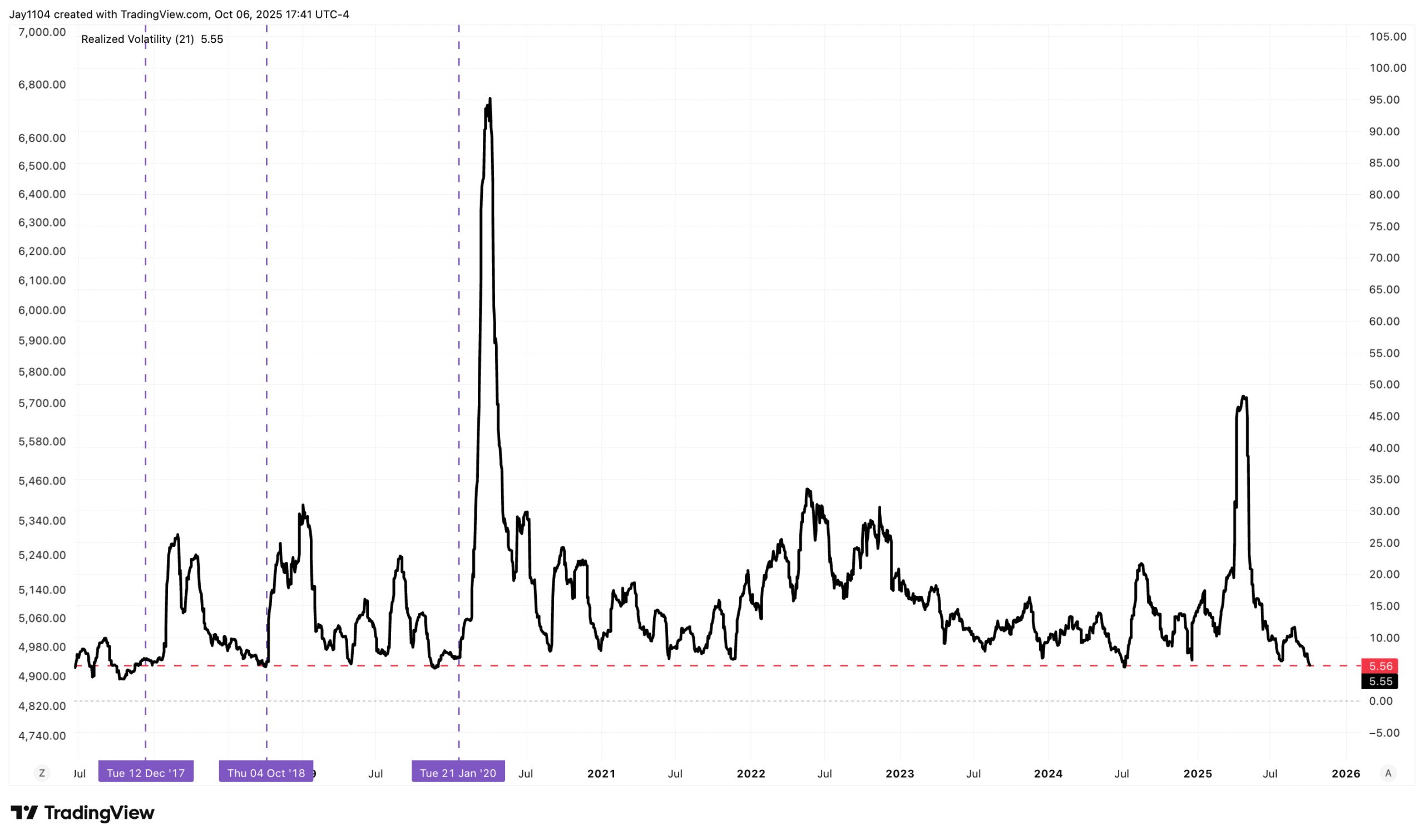
Meanwhile, the 3-month realized volatility is at 8.3, which means the S&P 500 can’t move up or down by more than about 52 bps per day without causing realized volatility to rise.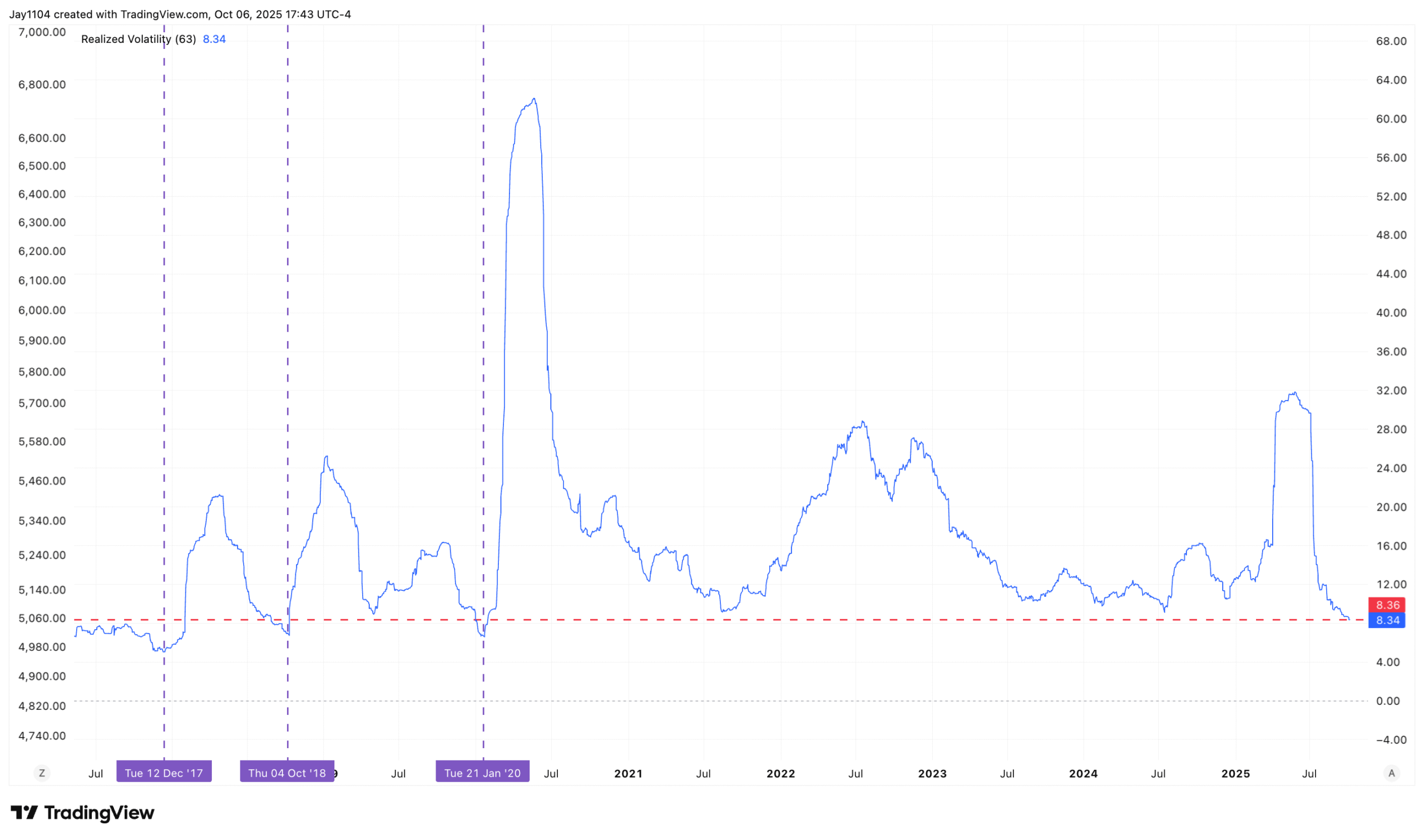
Again, the combination of low implied volatility, high dispersion, and low correlations and realized volatility makes this setup resemble 2018, 2020, or 2022 more than 1999. In fact, the VIX was structurally higher in 1999 and early 2000, and was not low.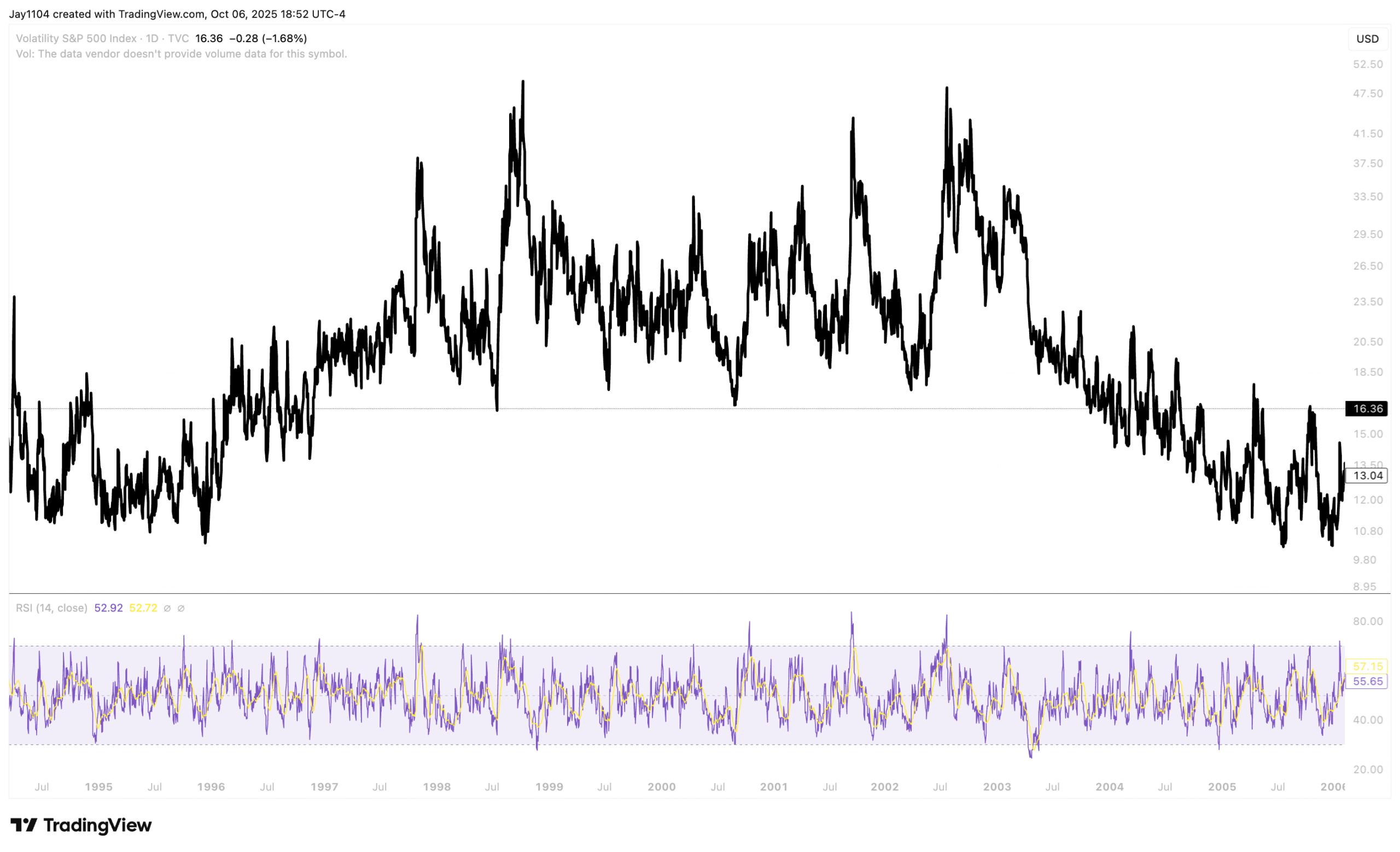
Three-month realized volatility was also significantly higher. The red dotted line marks where three-month realized volatility stands today. From both a realized and implied volatility standpoint, volatility was much higher in the late 1999 and early 2000 period. Today, it’s suppressed. A different type of trade is driving the market higher now compared to the year 2000.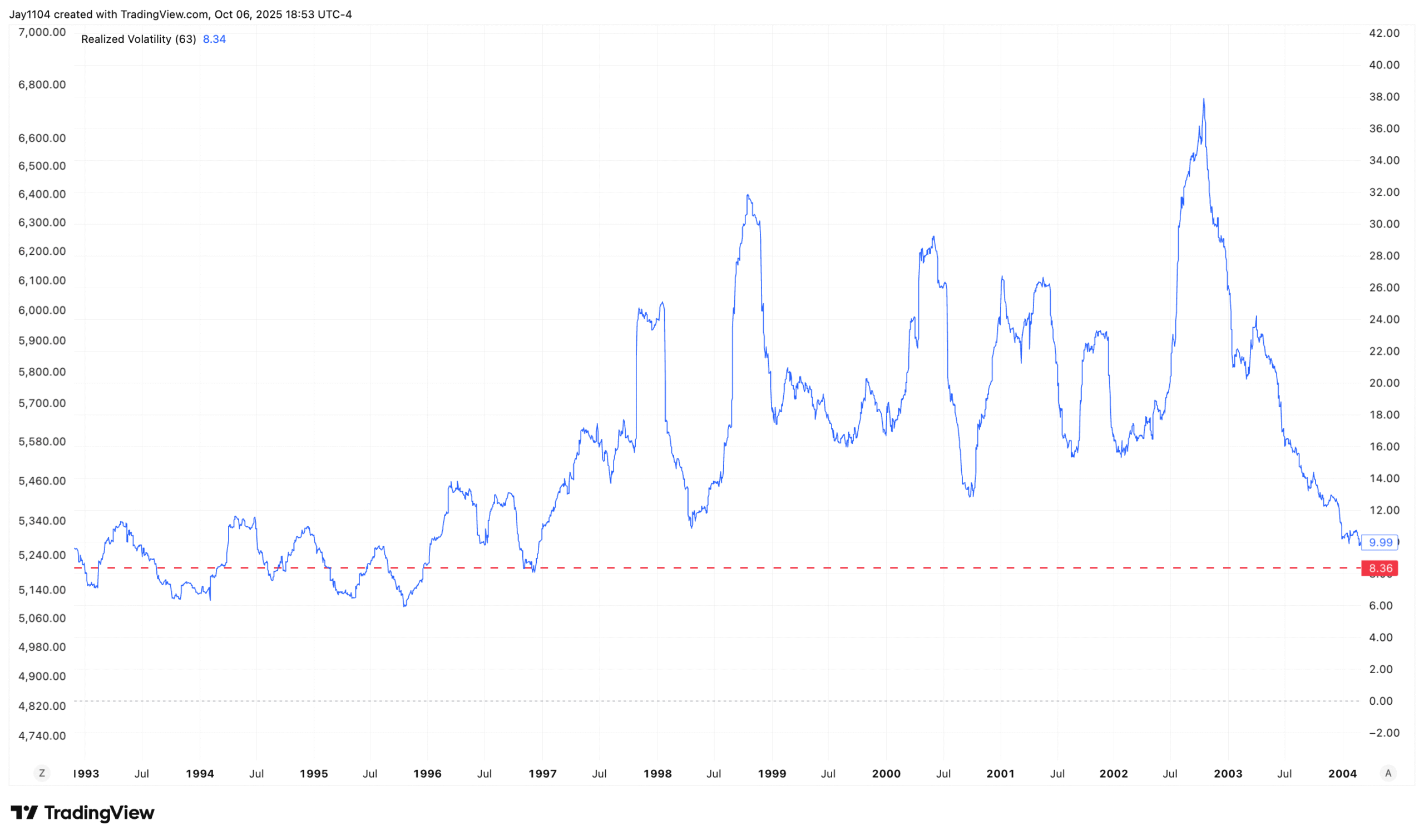
The options market in 1999 was not nearly as complex as it is today, and there’s no doubt in my mind that what we’re seeing now is an implied volatility dispersion trade being run. It will end—because it always does, as we’ve seen many times before. Generally, it stops right when earnings start, which is typically next week, and unwinds as companies report their results.
Finally, I would keep a very close eye on the JGB market, becuase rates in Japan went much higher last night, and the USD/JPY weakened signfiicantly, and if rates keep rising, and the and the yen weakens, US dollar liquidity will start to get really tight, as the cross basis swaps being heading lower, and there was certainly to yen-carry to save stocks in 2022 when it happened the first time around.
Not only that, but tonight we get a 30-year auction in Japan as well.